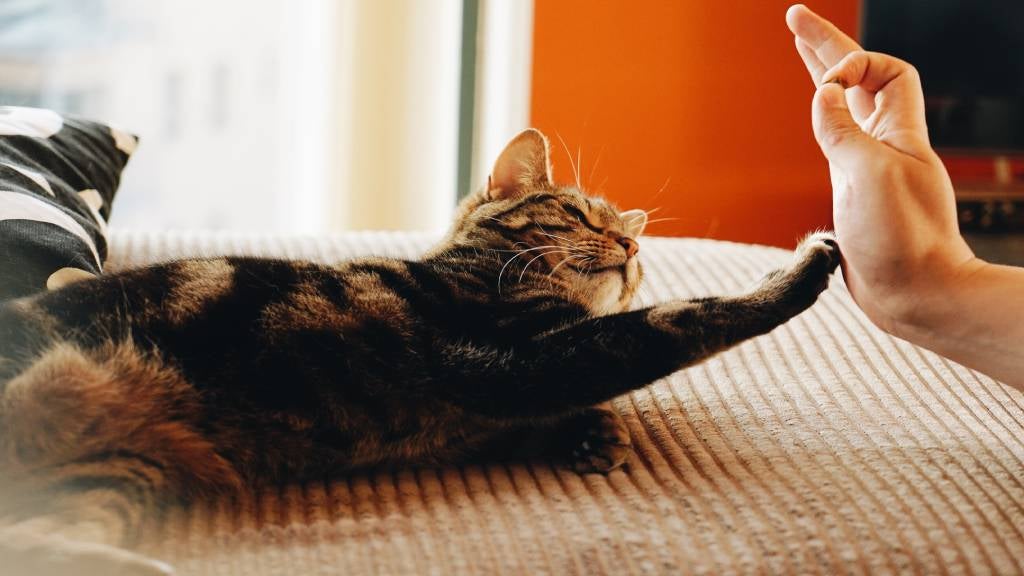How to spot pain in your pets

Did you know that in 2015, Aotearoa New Zealand made the decision to include the words “to recognise that animals are sentient” in law? What does that mean? That our loveable mates can experience emotions similar to us!
More about sentience
The New Zealand Veterinary Association’s Position Statement on sentience, tells us it “is the ability to feel, perceive or experience subjectively (i.e., the animal is not only capable of feeling pain and distress but also can have positive psychological experiences). To state that animals are sentient accepts that they can experience positive and negative emotions.”
Most people who work or live with or have had lived experiences with animals would agree with this statement – on a day-to-day basis we see our pets’ emotions and the way they experience the world in their own way.
As pet parents, our pets’ welfare including pain and its management is in our hands. So how do we recognise pain in our pets and what can be done to help them?
How do pets show their pain?
Just like in humans, an animal’s experience of pain is their own. What some pets find intolerable, may not bother others. This is the subjective experience of a pet and in recognising and treating pain, it’s important we treat it as such. It’s also important to know that many animals try to hide their pain, so signs may not be obvious.
So, what should we look out for when assessing pain in our four-legged friends and what can we do to help?
Here are six signs to look out for when it comes to our furry family members:
1. Changes to mobility and movement
Sometimes the changes to an animal’s mobility can be obvious, such as limping, but there’s other things pets do when in pain, be that pain in a joint or bone, or a muscle. Look for alterations in activity – struggling to jump in the car, or on the bed, difficulty on stairs, altered gait, stiffness when rising or reluctance to sit.
Remember minor strains or bumps occur (like stubbing a toe!) and these may or may not require veterinary attention. If in doubt, a veterinary checkup is a good idea.
2. Switching up postural changes
It’s easy to overlook more subtle pain indicators. Pets may hunch their backs, carry or use a leg differently, or head bob. They may not “track-up” properly (back feet fall short of front footprint), or it might be as obvious as a “saw-horse” or a “praying” position where your pet may stretch out, keeping their front legs out in front of them, while their elbows almost touch the floor and their back end is arched up in the air.
Ear and tail positions may change due to discomfort such as ear disease, or nerve or back pain.
It’s also worth noting toileting posture! Diseases such as osteoarthritis or disc disease can make normal toileting positions really difficult for our furry companions.
3. Sounds that don’t sound right
Vocalising includes whimpering, yelping, groaning, grunting, whining or howling. It can be hard to know exactly why it happens but in the instance that it does, persists, or is particularly intense - it’s best to get a veterinary checkup.
Not all vocalisation will be about bones, joints and muscles. Internal tissues such as organs or supporting tissues can also cause pain and animals to vocalise because of that pain. When in doubt, get it checked out!
4. Body system responses
Like us, when animals are in discomfort they may breathe differently. This can be in short, shallow pants or deep, slow breathing. Heart rates also change with pain.
These changes are the easiest to see or assess but are amongst a multitude of other physiological changes that pain causes. Remember that can include psychological pain too!
5. Temperament and interaction
Changes to your furry friend’s personality may also indicate discomfort. Less effusive greetings, reluctance to do walkies, avoiding young boisterous children and animals might all be to protect them from pain.
It might also just be that these boisterous buddies are a bit annoying – but it pays to think about what your pets might be trying to tell you from a few different points of view.
New noise sensitivities can also be a sign of pain, particularly in older animals. Sudden or loud noises may cause animals to tense up, which causes pain for already inflamed muscles and joints. So, if your pup suddenly starts hiding when you reach for the vacuum cleaner, or you see any other sudden changes in behaviour or personality, it might be time for a checkup.
6. Old but not stiff
Finally, less walking, more sleeping and other “old age” behaviours, shouldn’t just be accepted for our older friends. Regular veterinary check-ups throughout life and certainly in geriatric-hood are important. There are lots of options for making your older companions more comfortable, and your veterinary team is great at assessing pain. Check out the Feline Grimace Scale as a new way of assessing pain in cats.
It's easier for your veterinary team to be objective, and they have a lot of knowledge about pain. Just because it’s common to see slow, limping, sleeping and grumpy older members of our furry family, doesn’t make it normal.
Love them. Protect you with SPCA Pet Insurance.
30 May 2022